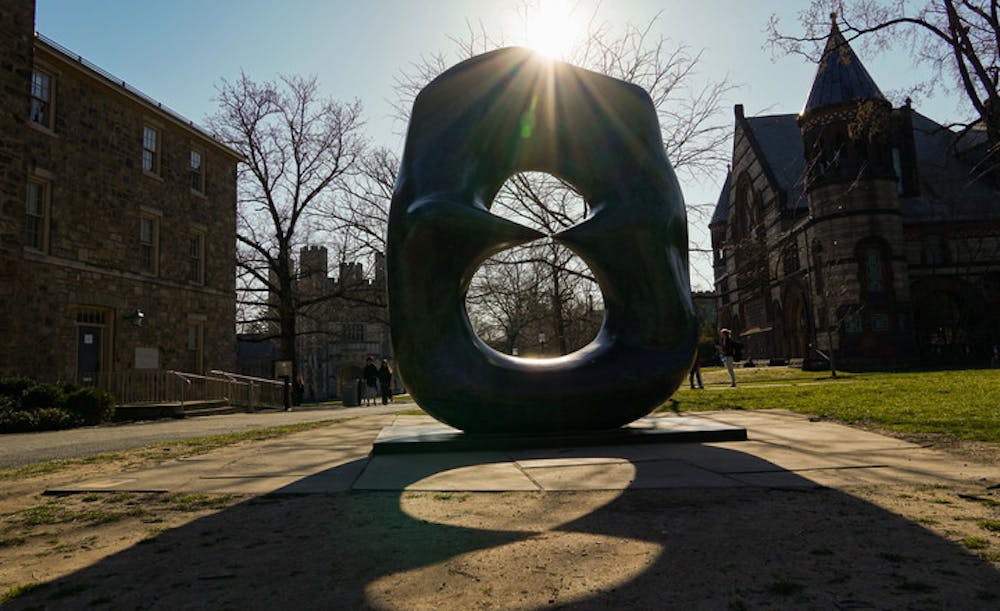As tens of thousands of high school seniors vie for a spot in Princeton’s Class of 2028, many will be accepted through their Nov. 1 early applications. For the Class of 2024 — the class with the most recent publicly available early admissions data — nearly half of the students were accepted through early admission. Early action (EA) acceptance rates are considerably higher than those for regular decision (RD) at every Ivy League institution: early commitment clearly increases a student’s chances of getting into top schools. But the nature of restrictive (or single-choice) early action (REA) processes, like Princeton’s, offer that benefit to only a privileged collective. In order not to disadvantage and dissuade applicants who need more security in the college process, Princeton should adopt non-restrictive early action or, at least, return to its pre-2008 early decision (ED) program.
Currently, Princeton, along with Harvard, Yale, and Stanford, do not allow their early-round applicants to apply to other private schools. Because of REA, choosing Princeton early means sacrificing the opportunity to capitalize on higher acceptance rates at a range of schools through traditional EA and ED processes. REA precludes the potential security of being accepted to at least some private college, and therefore, pushes applicants who can’t afford to pass through the early round without any ‘safety schools’ out of our early applicant pool.
For lower-income students, rates of REA acceptances are particularly low. Of matriculating applicants from families making $40,000 to $80,000, only 19 percent were accepted early, while 62 percent of their peers with household incomes above $500,000 were accepted early, and the share accepted early rises with each upward step in family income between those two brackets. High school type, as well, seems to predict who can gamble on Princeton alone in the early round, as 53 percent of acceptances from private schools applied with REA, compared to 32 percent of those from public schools.
Applying to Princeton early has become a privileged pathway, rewarding those with enough resources to take an application risk and shutting out those who want or need the security that Princeton’s ultra-competitive process can’t offer. The University shouldn’t miss out on potentially great students who aren’t able to play numbers or confidence games, and who eliminate themselves from early consideration — or even exclude themselves entirely by finding ED acceptance elsewhere — when we fill half our class before the admissions office sees their profiles. Some students, having missed out on the early window’s higher acceptance rate and the chance to demonstrate commitment to Princeton, may look at the staggeringly low 5.8 percent regular decision acceptance rate and consider not taking serious time and effort away from school, work, or other applications for one that seems like an impossible reach. Switching to non-restrictive early action, which would allow students to try for Princeton without giving up the early-round advantage at other schools, would remove this barrier.
In reality, REA does more to serve the school’s image through yield rate than to better the student body. After removing ED in 2008, Princeton’s yield rate dropped by 10 percent, and after Princeton’s admissions office instated REA four years later, the yield rate recovered 8 percent.
For most colleges, yield rates are a key factor in boosting reputation and ranking, but Princeton (ranked first by Forbes, the WSJ, and U.S. News) needs no help in those areas, so a drop in yield seems like a worthwhile sacrifice to increase the breadth of applicants that our admissions office sees.
All Ivy League schools besides the “Big Three” of Princeton, Harvard, and Yale, offer ED, a less harsh system that allows you to identify a top choice but also apply early to backup options. REA applicants must already identify one of these four schools (including Stanford) as their top choice, and if accepted, will almost certainly matriculate absent unexpected circumstances — the system is practically ED on Princeton’s side. And ED wouldn’t lock students in undesirably — students can (and realistically should) break ED agreements for financial reasons. At least with ED, rejected students could open other options with other EA applications.
Unless it is desperately important to Princeton that they know who is most committed to them (unlikely, considering they don’t even track demonstrated interest), the University should go further than ED. If knowing the most committed students is truly that crucial, they could, following the University of Chicago, give students the choice of either ED or EA, but any system that doesn’t lock applicants into Princeton and only Princeton would be an improvement.

Yes, the yield rate might take a hit, but Princeton’s prestige means it should be above cheap tricks to boost matriculation. By forcing would-be Princetonians to weigh the risks of REA, we prevent our admissions office from reviewing as diverse a pool as possible in the easier early round.
Brian Hegarty is a freshman from Milton, Massachusetts and can be reached at bh3247@princeton.edu.









